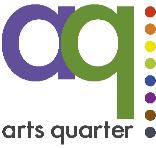 |
||||||||||||
managing change in the arts and not-for-profit sectors |
||
Arts Quarter Launches Individual Giving in the Arts Report 23rd July 2012
Significant Opportunities to Increase Individual Giving Could be Compromised by Failure to Communicate Need and Poor Leadership To download a summary of findings, click here To request a full copy of the report free of charge, please contact us by clicking here Arts Quarter has announced the findings from its most comprehensive review of the state of individual giving in the cultural sector to date. Its report, Increasing Individual Giving to the Arts: Evidence, Aspirations and Potential Barriers to Success draws together the findings from two of AQ's landmark research projects to look at the potential for arts organisations to increase levels of giving over the next three years as well as exploring possible barriers to success which the report urges arts organisations to address in order to meet their clear aspirations to significantly increase levels of individual giving over the next three years. Firstly, the report details the final set of findings from AQ's two-year Hidden Wealth Research Project which closed in May 2012, in which 126 arts organisations from England have taken part in a process of wealth screening audience and attender data and qualitative interview. These findings provide very clear evidence of project participants holding suffiicient numbers of donor prospects in order to develop successful giving campaigns. Secondly, the report explores detailed findings from AQ's March 2012 Philanthropy in the Arts Survey on individual giving aspirations and potential barriers to delivery in which some 351 arts organisations from England took part. Key Findings: Across all participants in AQ's Hidden Wealth study, an average match rate of individuals with a liquid asset base in excess of £1m each of 3.4% of records screened was achieved. Findings also show clear capacities to grow grant making trust and corporate giving based on identification of affiliations in these areas as part of the screening process. Looking at findings from the Philanthropy Survey - ambitions for growth over the next three years are significant with organisations overall looking to achieve a three or four-fold increase in levels of individual giving as a proportion of their total fundraised incomes by 2015. Effective fundraising engagement by Trustees and an ability to articulate a clear case for support to potential donors - two key drivers to achieving growth are however surprisingly low at this time and are in clear need of addressing if organisations are to fulfill their giving ambitions - according to respondents. Only a third of respondents reported understanding by all Trustees of their fundraising strategies at this time. Similarly, just a third reported that all Trustees understood the importance of fundraising to their organisation's business models. Actual participation in fundraising solicitation and stewardship are also currently low with just 10% of respondents able to report that all Trustees take part in making approaches or play a role in thanking donors. Alongside low levels of fundraising leadership at this time, respondents also reported on a failure to have at their fingertips an effective Case for Support with which to make approaches to prospects. Only 25% of respondents overall felt confident that their Case for Support was working well in engaging prospective donors at this time. The full report details findings by art form, region and scale and provides an opportunity for participants and all in the arts looking to increase levels of private sector giving to benchmark their own capacities to deliver and reflect on what they may need to address in order to realise their own individual giving and wider private sector fundraising ambitions. In launching this report, John Nicholls managing partner of Arts Quarter commented, These findings show clear potential for art organisations to significantly grow their levels of individual giving and indeed meet their aspirations based on the statistical evidence we have gathered. What concerns us is the lack of engagement by Trustees in fundraising at a time when senior volunteers need to step up to the plate and play a more active fundraising leadership role in supporting the organisations of which they are a part. Furthermore, the lack of confidence that organisations have at this time in effectively communicating their need for support to potential donors is a significant concern particularly given increased competition for philanthropy. We hope that as many arts organisations as possible will heed these findings and look to address these two critical factors, so that they are truly able to achieve their fundraising ambitions. A full copy of Increasing Individual Giving to the Arts: Evidence, Aspirations and Potential Barriers to Success can be obtained free of charge from info@artsquarter.co.uk |
||||||||||||
news |
||||||||||||